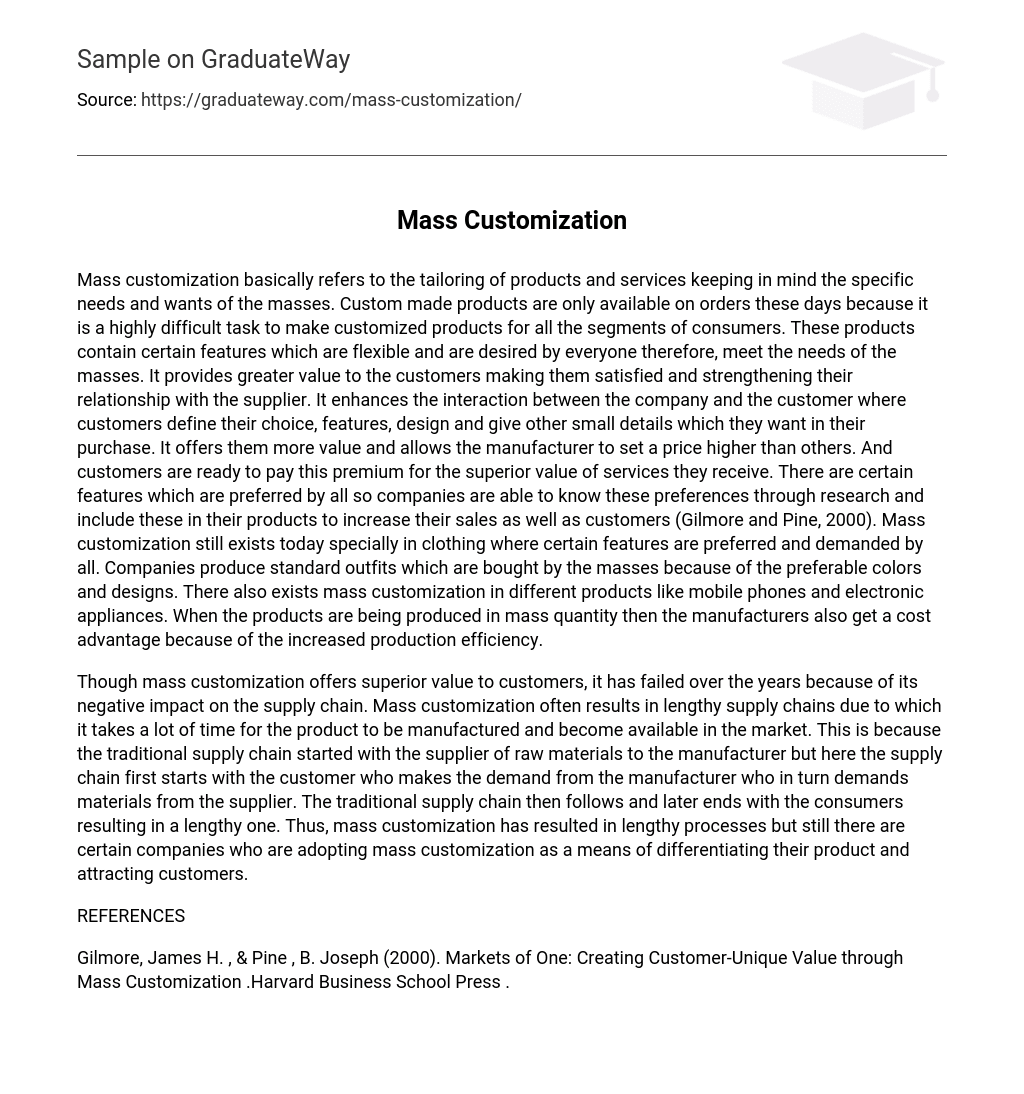Mass customization basically refers to the tailoring of products and services keeping in mind the specific needs and wants of the masses. Custom made products are only available on orders these days because it is a highly difficult task to make customized products for all the segments of consumers. These products contain certain features which are flexible and are desired by everyone therefore, meet the needs of the masses. It provides greater value to the customers making them satisfied and strengthening their relationship with the supplier. It enhances the interaction between the company and the customer where customers define their choice, features, design and give other small details which they want in their purchase. It offers them more value and allows the manufacturer to set a price higher than others. And customers are ready to pay this premium for the superior value of services they receive. There are certain features which are preferred by all so companies are able to know these preferences through research and include these in their products to increase their sales as well as customers (Gilmore and Pine, 2000). Mass customization still exists today specially in clothing where certain features are preferred and demanded by all. Companies produce standard outfits which are bought by the masses because of the preferable colors and designs. There also exists mass customization in different products like mobile phones and electronic appliances. When the products are being produced in mass quantity then the manufacturers also get a cost advantage because of the increased production efficiency.
Though mass customization offers superior value to customers, it has failed over the years because of its negative impact on the supply chain. Mass customization often results in lengthy supply chains due to which it takes a lot of time for the product to be manufactured and become available in the market. This is because the traditional supply chain started with the supplier of raw materials to the manufacturer but here the supply chain first starts with the customer who makes the demand from the manufacturer who in turn demands materials from the supplier. The traditional supply chain then follows and later ends with the consumers resulting in a lengthy one. Thus, mass customization has resulted in lengthy processes but still there are certain companies who are adopting mass customization as a means of differentiating their product and attracting customers.
REFERENCES
Gilmore, James H. , & Pine , B. Joseph (2000). Markets of One: Creating Customer-Unique Value through Mass Customization .Harvard Business School Press .





